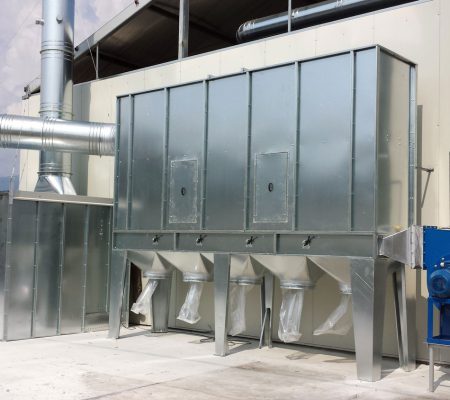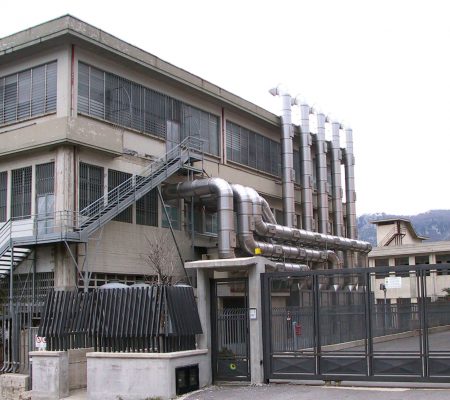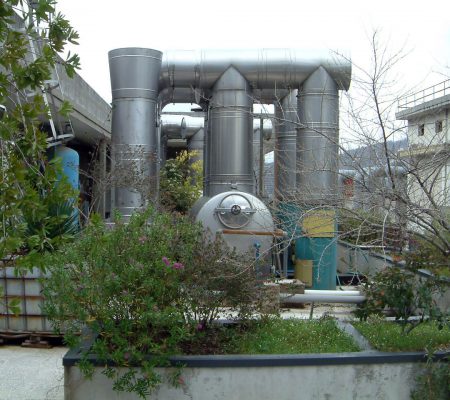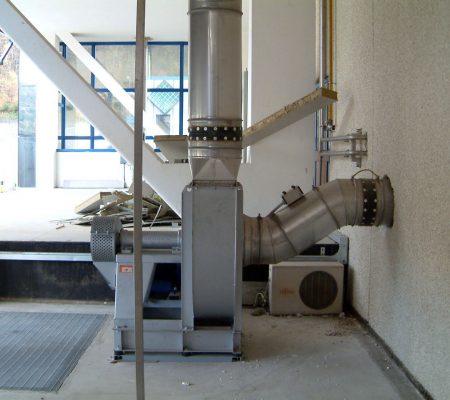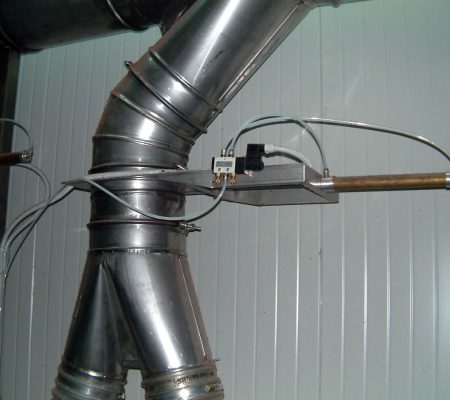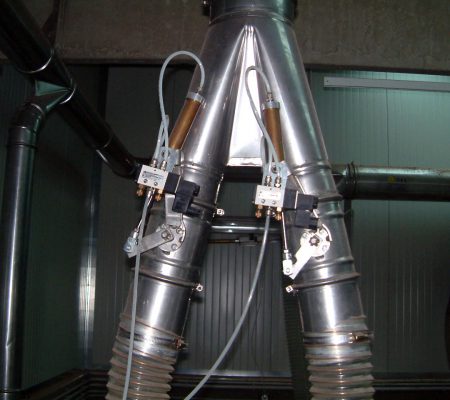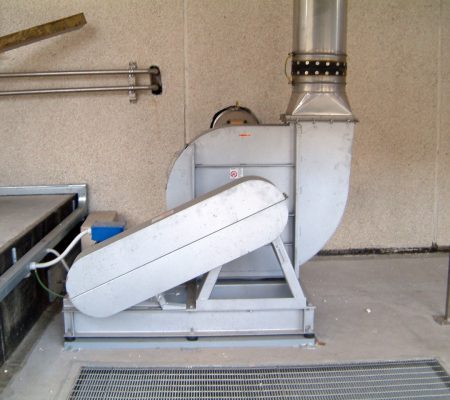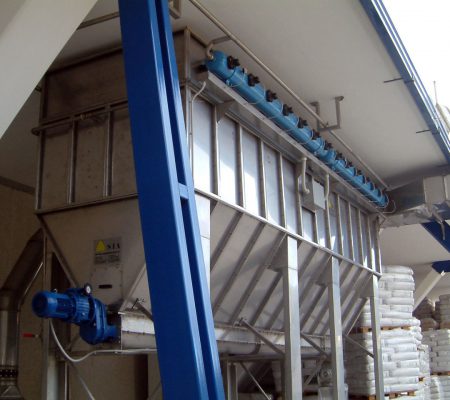- Metal heat treatments
In this sector our company boasts paramount experience in making systems to reduce fumes and aerosols coming from the hardening, tempering, cementation and nitriding processes.
Thanks to our range of OIL and C-OIL model filters, we are able to supply an optimum solution for treating generated pollutants, also thanks to the counter-current air jet cleaning system for cleaning filtration means of any dust and/or silicates.
SIA also studies, designs and makes capture systems, such as hoods, hoppers and still others, through which the pollutants are collected and conveyed to the filter, guaranteeing adequate speeds both in intake and along the filter delivery pipes, in order to provide a personalised and quality reduction system.
- Galvanic
With the experience it has gained in the sector in all but 30 years, SIA has developed the best solutions as regards the intake and filtration of fumes and vapours coming from galvanic treatments.
We are able to offer both dry solutions with bag reduction systems (PNU, SCC) and solutions with wet scrubbers (HLT SPRAY TOWERS). Also the installation of reagent injection and batching systems to reduce metallic vapours is feasible.
- Plastic and rubber processing
SIA - the leading company in the intake plant sector for over 30 years - offers the innovative range of COALESCENCE FILTRATION UNITS, specific for purifying mineral oil mist and vapours coming from RUBBER moulding processes using presses and annealing/post-vulcanisation by furnaces with various types of compounds.
SIA has developed a new filtration system by applying innovative technical solutions to the well-know coalescence filtration method adopted in other production sectors. SIA wants to provide its customers the peace of mind of being fully compliant with current pollution legislation together with the sizeable reduction in intake plant management costs.
The new generation purifiers’ throbbing heart is, in fact, the so-called filtration “candles” made using special densely compressed fibreglass elements able to withstand demanding work loads, practically without requiring routine maintenance work.
Pollutants are reduced through two filtration stages:
- first filtration stage with agglomeration of the pollutant oily particles and of the dusty particulate through common regeneration and/or accumulation filters, with the inertial impact or cyclone effect principle.
- second filtration/decantation stage: made up of fibreglass coalescence candles.
It is to be understood that the modular configuration of the system will be designed and built based on the problems at hand, with consequent installation of appropriate pre- and post-filtration systems.
Some accessories present
- Automatic cleaning system for the candles, temperature and level probes via electronic control unit with LCD display, management and control by inverter of the electric fan.
- Bottom chamber with its drainage and discharge system with non-return valves.
- ATEX-certified explosion-proof panel supplied standard.
- Polymer processing
Thanks to the experience gained in over 30 years, SIA offers advanced technological solutions for the intake and filtration of pollutants coming from polymer processing. The wide range of products available is able to meet the different requirements arising from processing, such as:
- Thermoforming
- Pressing (by compression, injection, etc.)
- Coating
- Drying
- Mixing
These processes can generate a large number of different pollutants, depending on the starting plastic and on the additives used during the processing. SIA supplies filters with water, bag, coalescence candle or combined reduction systems, depending on the customer’s requirements that have to be assessed on a case by case basis in order to be able to provide the most adequate solution.
- Chemical plants
Thanks to the experience and technical knowledge that it has acquired over the years, SIA has developed the best solutions as regards the separation and filtration of pollutants coming from the chemical processes used by production activities such as chemical, petrochemical and pharmaceutical industries, refineries, incinerators/thermal waste treatment, biogas production plants, power plants, cement factors, foundries, steelworks, paper mills, aluminium production plants, and fertiliser and pesticide production plants.
Based on the customer’s needs, we design and build the most adequate solution, depending on the substances (solids, liquids, gases) that have to be removed from the air flow. In particular, our plants are used to: Removal of the acid gases, such as hydrogen sulphide (H2S), hydrofluoric acid (HF), hydrochloric acid (HCl) and hydrocyanic acid (HCN);
- Removal of the acid gases, such as hydrogen sulphide (H2S), hydrofluoric acid (HF), hydrochloric acid (HCl) and hydrocyanic acid (HCN);
- Removal of volatile organic substances through absorption/adsorption processes;
- Removal of odorous substances, such as sulphurous compounds, mercaptans, amines, volatile fatty acids, etc.;
- Recovery of solvents;
- Separation of dangerous dust with risk of fire and explosion of the gas;
The wide range of SIA solutions particularly includes wet dust separators, scrubbers, spray towers, and activated charcoal filtration units.
- Recycling
Thanks to its 20 years of experience in the filtration field, SIA has developed various solutions for treating any type of pollutant generated during waste recycling and recovery processes. Considering the variety and many types of pollutants that can be generated, SIA designs and builds complete and specific plants using both dry and wet reduction systems.
With the range of dust separators produced, we are able to reduce the concentration of the dust coming from these activities:
- Recycling of municipal solid waste;
- Handling and grinding of special waste (end-of-life tyres - ELT), waste electric and electronic equipment - WEEE), cables, ferrous and non-ferrous materials);
- RDF treatment and production;
We are also able to reduce and scrub odorous emissions and volatile organic compounds (VOCs) with wet spray towers or activated charcoal filtration units.
- Nautical industry
Since 1985, our goal has been to contribute to the improvement of the quality of work and of the impact of industrial production on the environment by offering a service that makes companies around the world fully compliant with current legislation.
SIA supplies fixed solutions (complete plants) or mobile solutions (compact trolley-mounted units) suited to the specific needs of the various processes of the nautical industry:
- Intake and filtration of dust coming from boat fitting out processes;
- VOS intake and filtration with activated charcoal filters from painting and manual/vacuum stratification operations;
- Intake and filtration of dust from sand-papering/cutting/finishing of composite materials;
- Intake and filtration of fumes and dust from welding, structural work and metal finishing operations;
- Intake and filtration of dust and shavings coming from carpentry processes;
- Furnaces for baking/stabilising epoxy resins;
- Intake and filtration plants for die casting aluminium and its alloys;
- Intake and filtration plants for oil mist/aerosols coming from machining operations.
- Graphic and printing industry
SIA’s products for the graphic industry meet a full range of intake and filtration needs.
SIA’s hoods and intake systems capture pollutants, such as printing fumes or dust coming from cutting operations, while the dust separator filters filter them. The ADP series of filters filter pollutants with a presence of VOSs and VOCs, such as those coming from the drying of ink.
- Food industry
SIA is also active in the food industry with its many products suitable for treating various types of pollutants.
The captation systems produced by SIA collect dust found in a large number of production processes of the food sector, such as the dry dust coming from mixing compounds, which can then be filtered based on the different flow rate and size needs from the dust separators of the STS, PNU and SCC series, in addition to from the compact dust separators of the AERO, S and COMPACT series.
Phone: +39 0825 581 560
E-mail: info@siaimpianti.com
